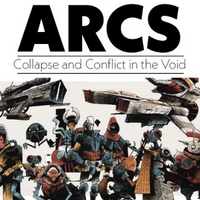13 February 2023
|
Under the microscope
Games often take epic events or whole eras as their themes: a key historic battle, the development of a major city over many years, even the rise of human civilisation over centuries. Cellulose goes in the opposite direction, zooming down to find challenge and drama in the tiniest and most everyday of settings: a plant cell.
If you’ve encountered previous titles from Genius Games, like Genotype – where players take the role of monks under the tutelage of Mendel, studying the genetic heritage of peas – you’ll have some idea of what to expect. Genius Games have taken the radical approach of publishing games with an educational slant where the game aspect isn’t just a lazy afterthought. These are mid-to-heavyweight euros with attractive components and a reasonable amount of crunch.
Cellulose is a worker placement game, where you’ll be placing a limited number of markers to take actions, acquire and spend resources, and accumulate victory points (technically ‘Health Points’, but no one but the most pedantic theme stickler is going to insist on calling them that). Resources are things like water and protein, and there’s a tableau of cards along the bottom of the board which you can grab to get bonus victory points at the end of the game and sometimes additional actions.
There’s also a ‘root and shoot’ board where you can advance your markers up a plant’s stems or down its roots, earning a recurring bonus the farther you go. There are – appropriately – branching paths; you can opt for an early payoff or advance down one of the longer roots which offers worse rewards earlier on but bigger ones later.

Admittedly, as with Genotype, some of the science does make early playthroughs a bit challenging, as you’re having to learn several things simultaneously: the rules themselves, the terminology used in the game, and then the logic of the theme and how that informs the mechanisms. In some games a familiar theme helps you remember rules: if you want wood you go to the ‘forest’ space, then you can use that wood to make a cabin on the ‘hut builder’ space. With Cellulose, for most players it’s not going to be immediately, intuitively obvious that you want to go to the Mitochondria with carbohydrates to generate ATP, which can make that first rules explanation a bit of rocky teach.
This is just something to be aware of, rather than a criticism per se. It would be perverse to complain that an educational game requires you to learn stuff. It’s just that some of that learning is going to have to happen before you even start. It’s not completely impenetrable, it’s just an extra layer that requires a little more effort from players before you start.
After that, what reveals itself is a pretty fun worker placement game. There’s a nice area control mechanic with water with rewards at the end of each round, and the cards add variance and some opportunities for simple combos when you pick up multiple cards with the same colour.
On the downside, it doesn’t feel brilliantly tuned for a variety of player counts. The board is double-sided, with a different layout for 1-3, but with just 2 players it can feel a little baggy. The overall arc of the game can feel a bit uneven, too. Once you’ve maxed out the root and shoot board, that spot becomes useless to you, meaning everyone’s routes for scoring points narrow, and not in a tension-building or interesting way. It means that the final round can feel a little anticlimactic.
This is partly because, aside from grabbing cards and advancing on the root and shoot track, you don’t have any econ engine of your own that you’re developing throughout the game. There’s not much sense of progression, just grabbing points from building the cell wall then heading off to grab more CO2 and water. It’s definitely a fun and interesting way to learn the key processes behind how a plant cell works, but if you’re not interested in the educational side there are tighter, crunchier worker placement options out there.
Tim Clare
PLAY IT? MAYBE
Fans of previous Genius Games titles like Genotype will appreciate the attention to detail and supplementary booklet explaining the science behind the game – particularly if you liked Cytosis, from which Cellulose borrows some of its mechanisms and feel.
TRY THIS IF YOU LIKED Cytosis
Designer: John Coveyou & Steve Schlepphorst
Publisher: Genius Games
Time: 90 minutes
Players: 1-5
Ages: 14+
Price: £50
What’s in the box?
- Double-sided game board
- Double-sided plant board
- 46 Cell component cards
- Water level marker
- First player marker
- 45 Water cubes
- 30 CO2 cubes
- 25 Protein cubes
- 8 6x Water markers
- 6 6x CO2 markers
- 15 Plant growth hormone tokens
- 25 Carbohydrate tokens
- 25 ATP tokens
- 8 Extra resource tokens
- 31 Player pieces (5 sets)
- 2 Scenario cards
- 4 Evening phase reminder tokens
- 5 Players aids
- 1 Double-sided solo mat
- 16 Solo cards
- Solo player aid
- Science behind Cellulose booklet
Looking for more?

This review came from Tabletop Gaming Magazine, which is home to all of the latest and greatest tabletop goodness. Whether you're a board gamer, card gamer, wargamer, RPG player or all of the above, find your copy here.
Get your magazine hereRead More...

If you want to read more about one of the most hotly anticipated games of the year, check out our interview with Cole Wehrle on ARCS! A new game from the designer of Root and Oath, and we've got all you need to know.
To infinity and beyond
Sometimes we may include links to online retailers, from which we might receive a commission if you make a purchase. Affiliate links do not influence editorial coverage and will only be used when covering relevant products







